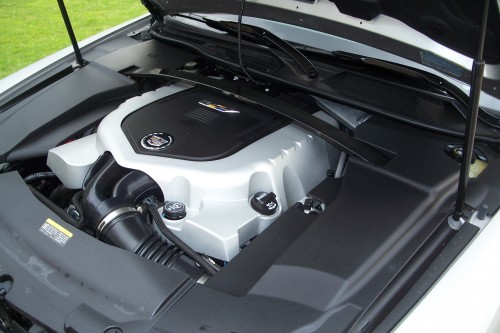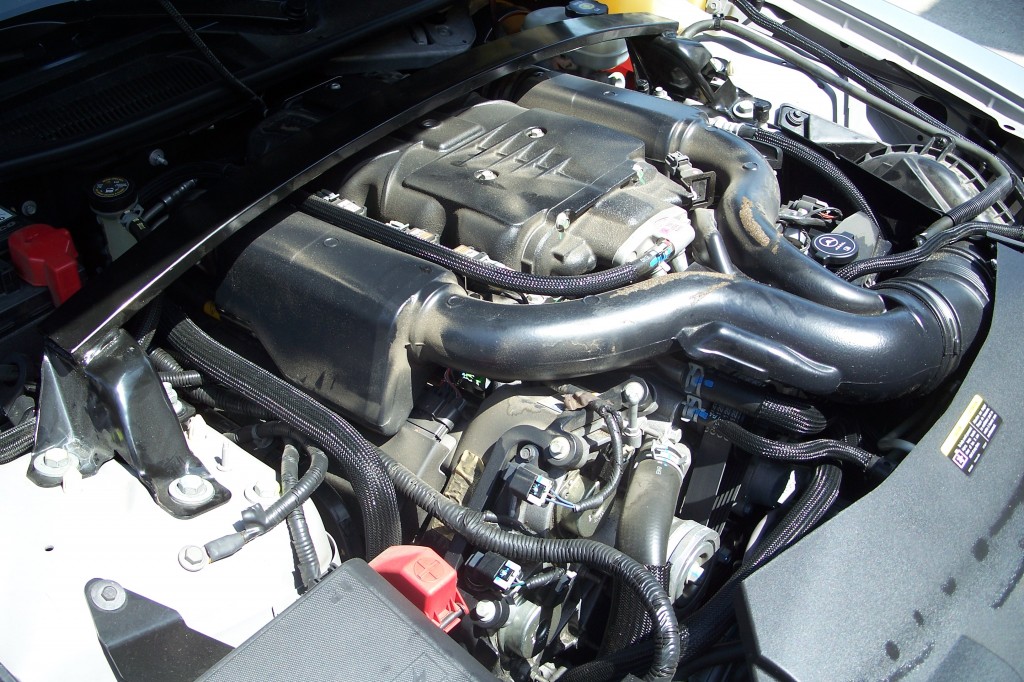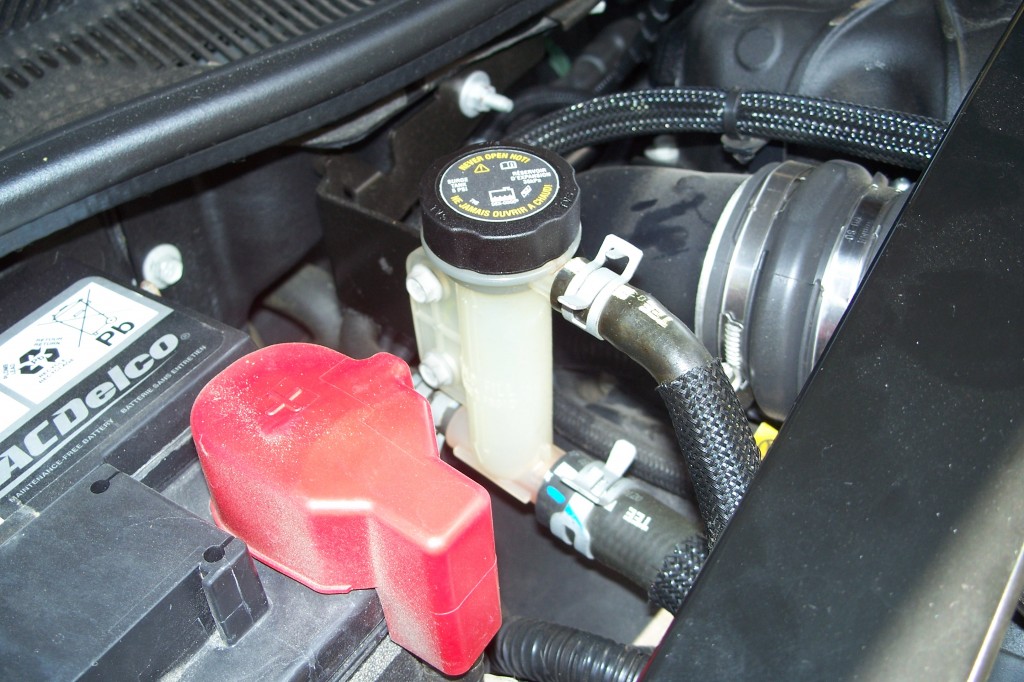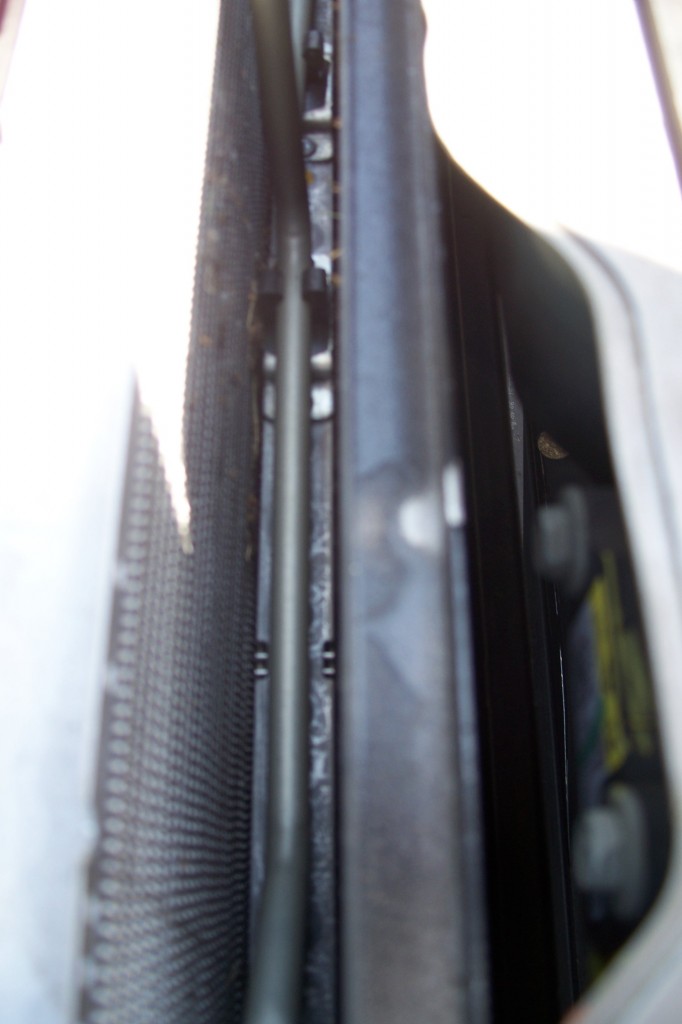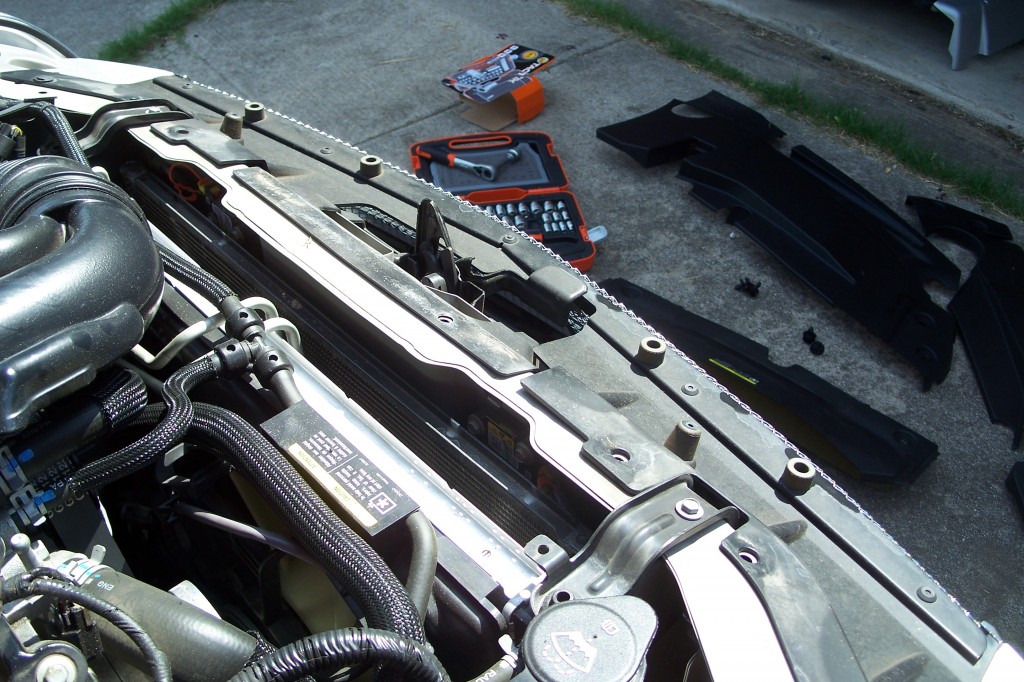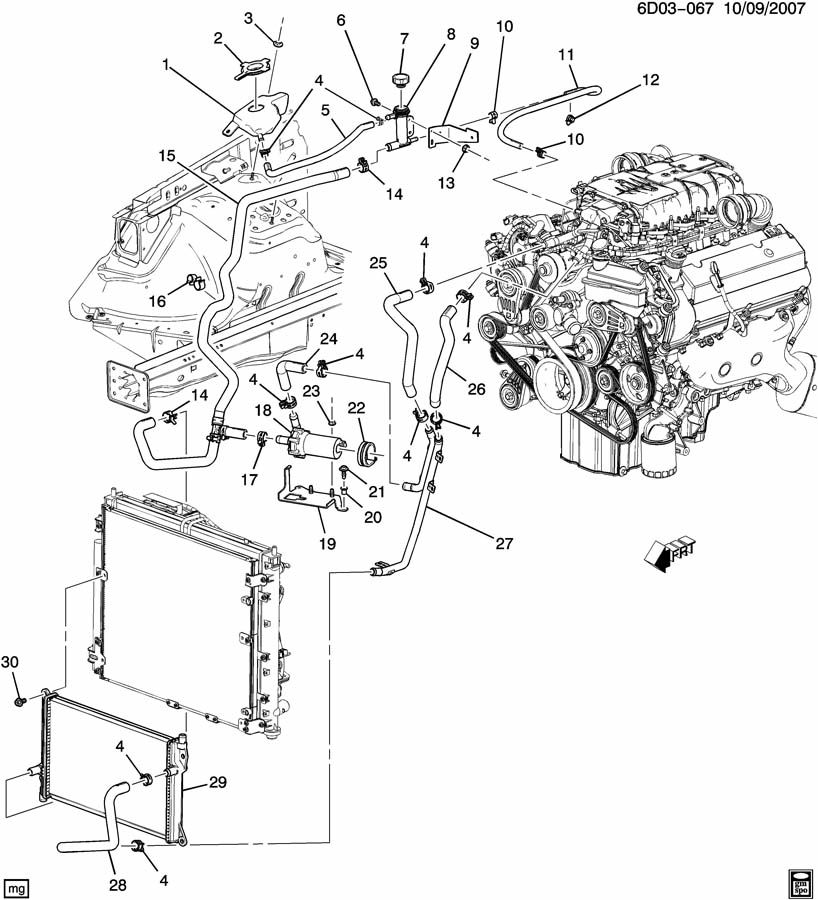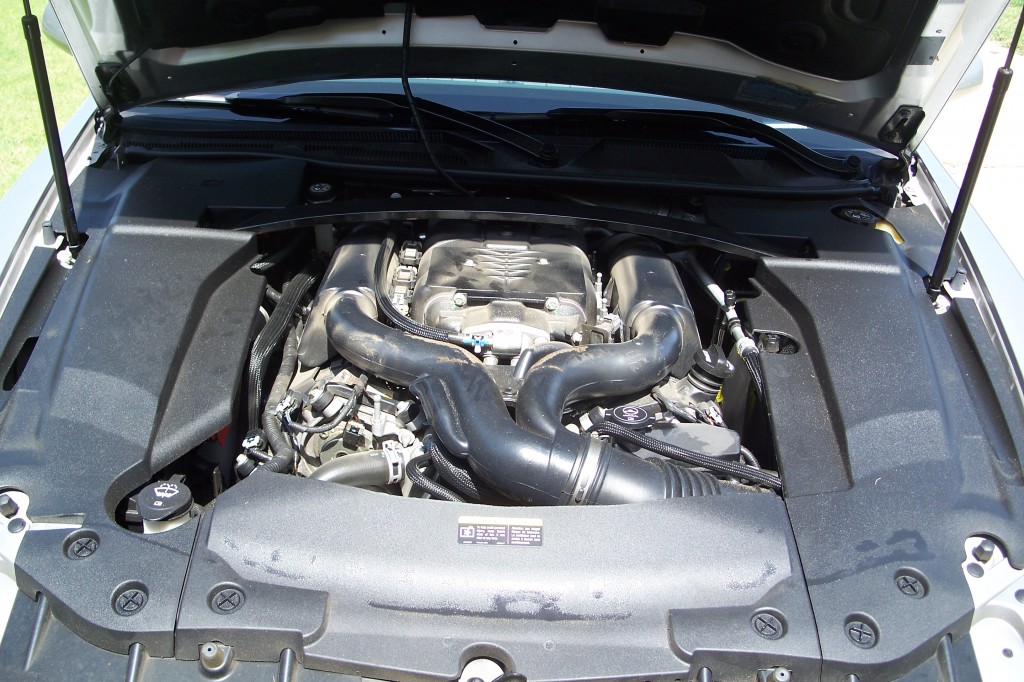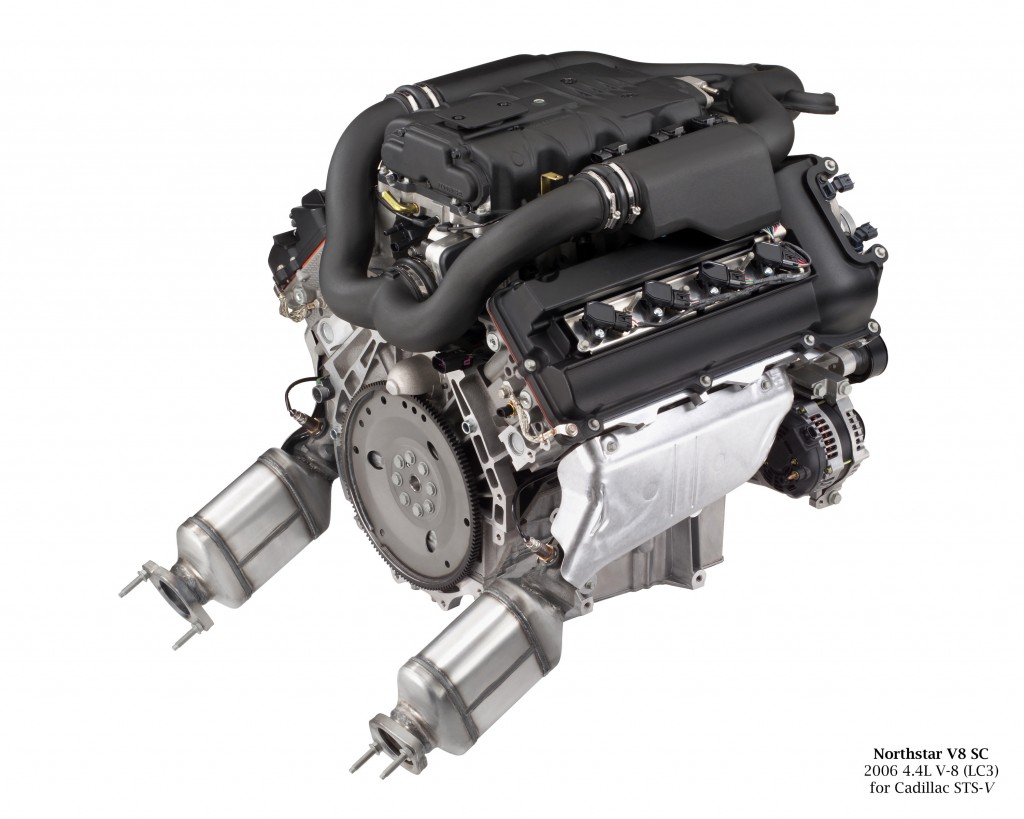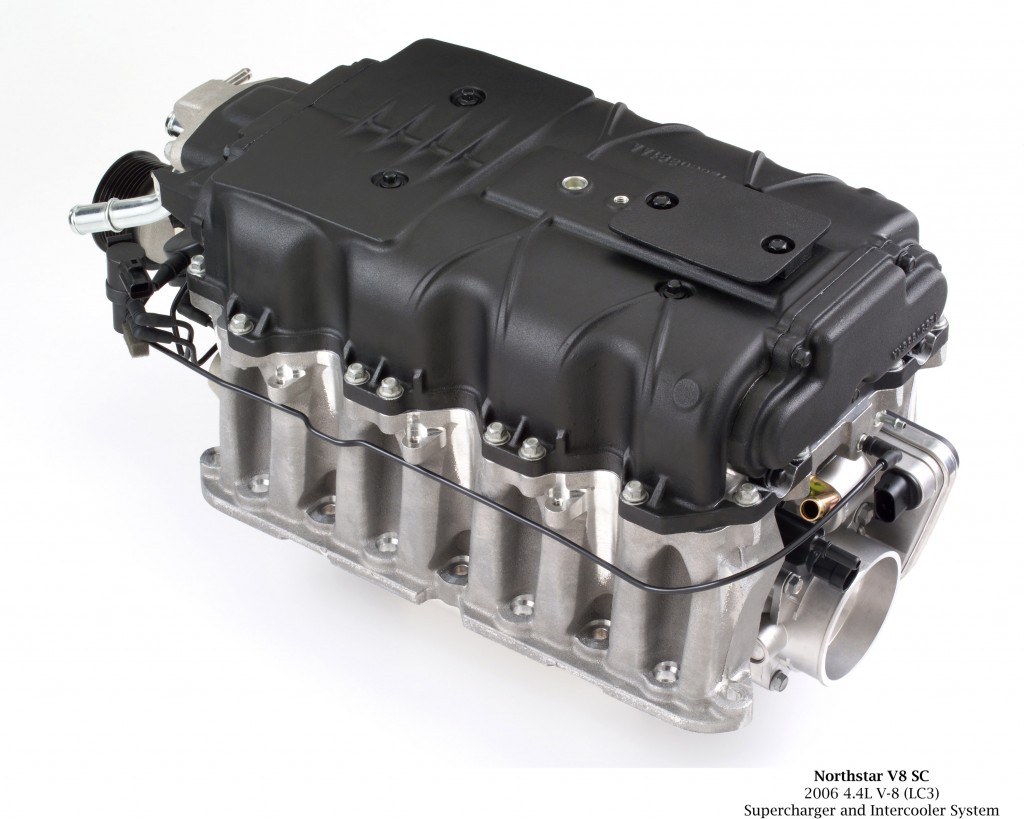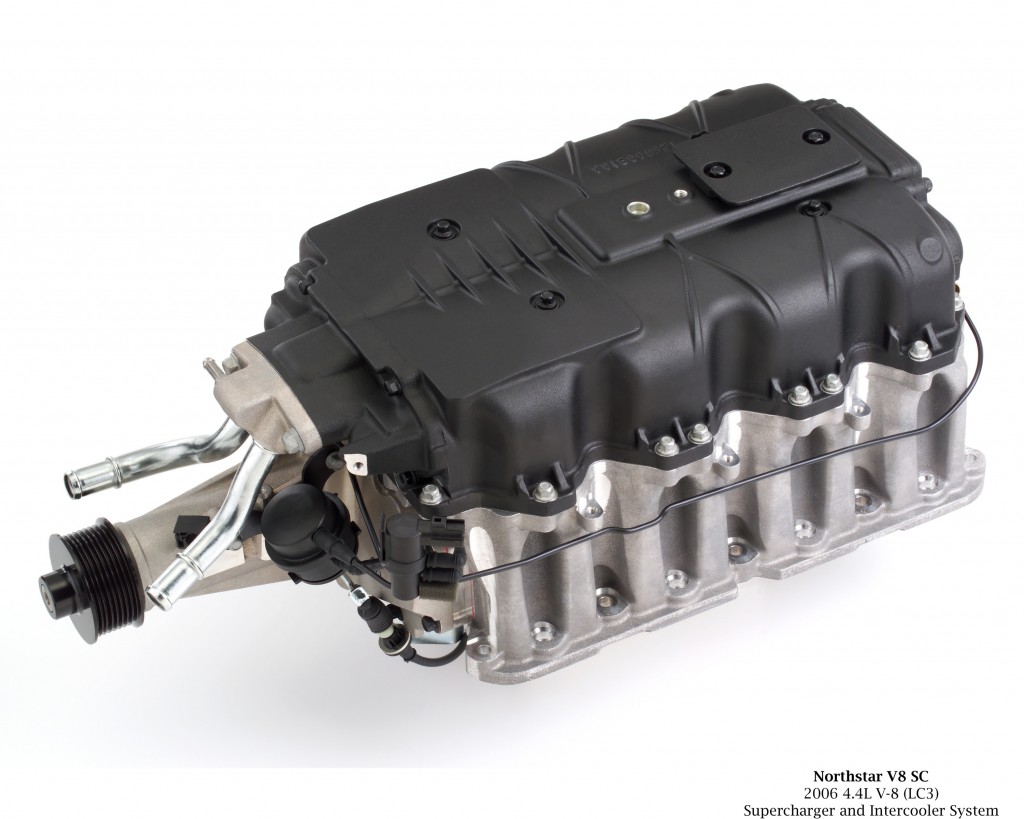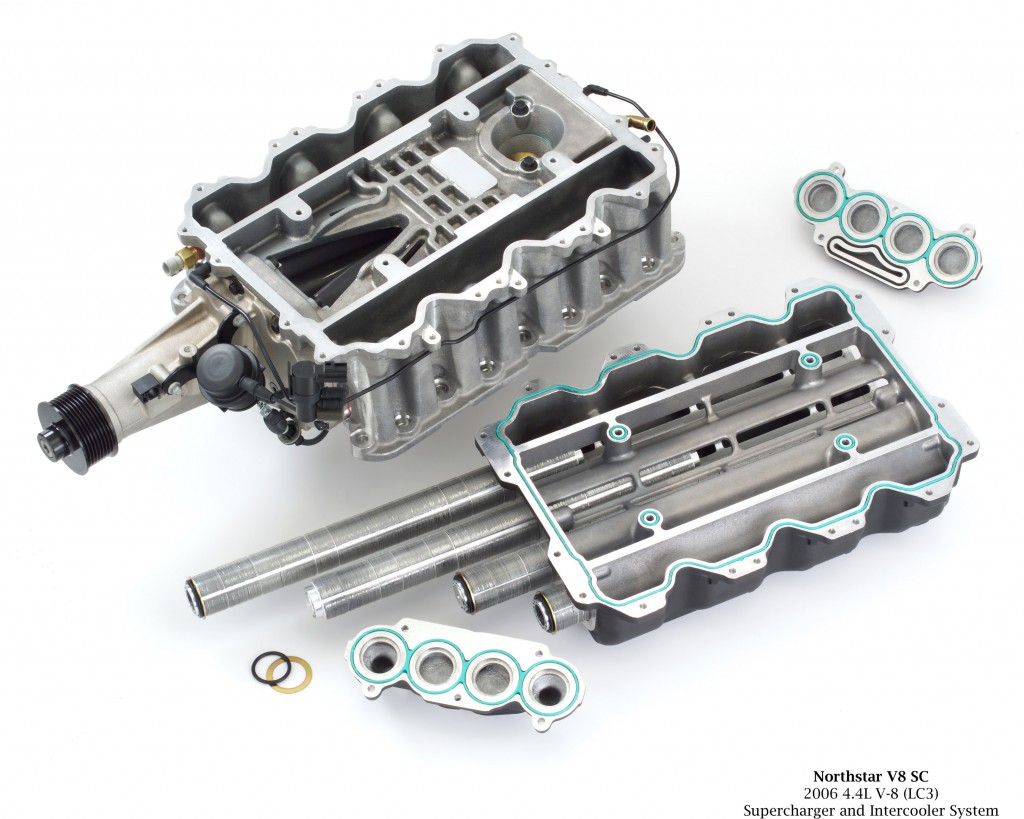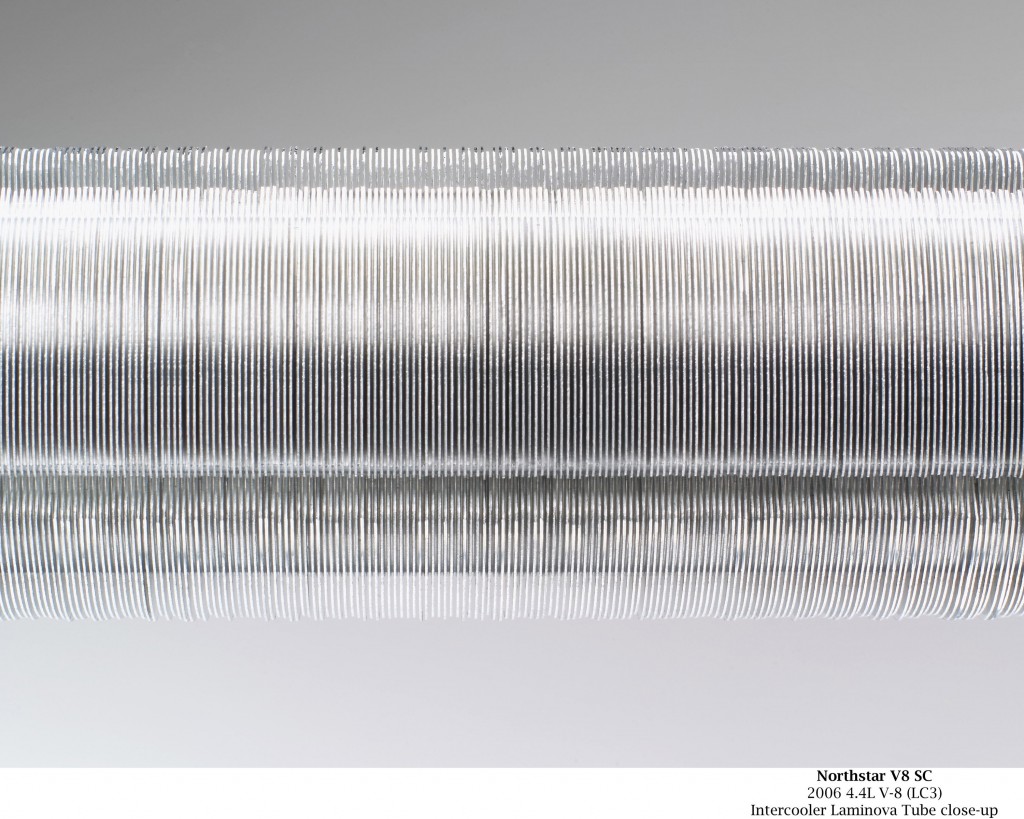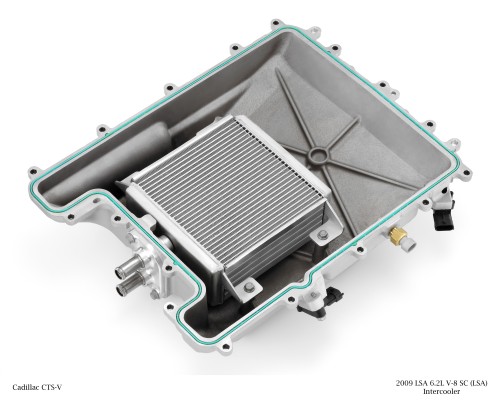For my upcoming Spectre Intake install the beauty cover on the LC3 4.4L DOHC VVT V8 in my 2008 STS-V will need to go. Technically, it can stay with less underpadding, but good excuse to remove it.
The top of the engine — the intercooler on top of the supercharger on top of the engine — is capped with this nice Cadillac beauty cover.
In my opinion, a beauty cover misses the point. I get that it cleans up the engine compartment nicely and all. But the beauty part should be the engine, not a molded cover hiding the engine.
Here’s what it looks like with the covers removed: (click on images for larger versions)
With dirt, part of the underside of the foam from the beauty cover, et al.
This actually is MUCH more interesting to me, and you can see the air intake piping, the intercooler and cooling lines, and even down to the right the belt drive for the supercharger.
This is a close-up shot of the intercooler coolant reservoir. Yes, it looks like it is just a filler neck because that is what it is. The fill cold line is near or at the top of the tube. You can just see the actual coolant in the tube just at the bottom of the tube before the insulated covering.
The tube coming out of the top of the reservoir is a vent drain to an empty spot in front of the battery.
It strikes me that replacing this small tube with a larger but sized to fit in the space reservoir would add more fluid capacity to the system and if selected appropriately bolt in.
It is very hard to photograph the front heat exchangers, but here is a shot and bear with me because we’ll switch to diagrams after the photo:
There are three different heat exchangers in view at the front of the STS-V.
The are in order from back to front, 22 the radiator, 21 the transmission oil cooler, 19 the A/C condenser (CONDENSER,A/C ACDelco #15-63240), and 17 the intercooler front-mounted heat exchanger (FMHE), (RADIATOR,CHRG AIR CLR, 25770419).
So looking at that, this view looking forward in the engine compartment probably shows the item 19 (black); the intercooler heat exhanger is a smaller item ahead of that and not visible.
This diagram shows just the intercooler flow paths and parts:
This gives me pause — the assembly diagram shows a reservoir (1) and the line from the tube running to that reservoir. My STS-V does not have this item (1) at all, so I’ll have to check with other owners to see what they have.
The intercooler pump part number and info is
| 018 | 22718756 | PUMP. Turbocharger/Supercharger Cooling. PUMP,CHRG AIR CLR COOL(LESS CLAMP). Required: 01For: DX 4.4D(LC3) (2006-2009) (2006 – 2008). |
The front center cover over the heat exchangers strikes me as perhaps functional, and used as a shroud to keep air flowing through the radiator. I put that one and the side covers back on for every day use.
Questions to ponder:
Is there an easy way to expand the intercooler coolant reservoir at the overflow and so add more coolant to the system for heat buffering?
The standard front mounted heat exchanger for the intercooler appears to be large and very functional. Is this really a weak spot and needing to be changed, or is the issue really the amount of fluid in the system?
Next Project: Get out there and clean up the engine compartment!

